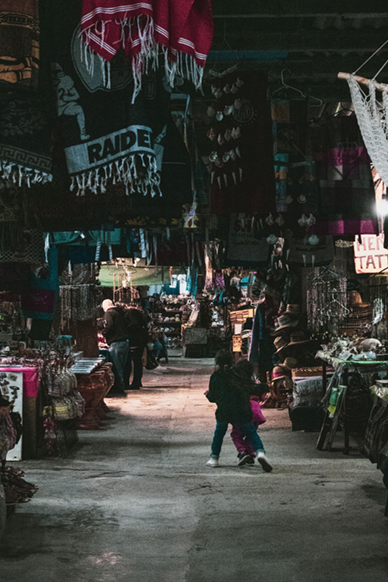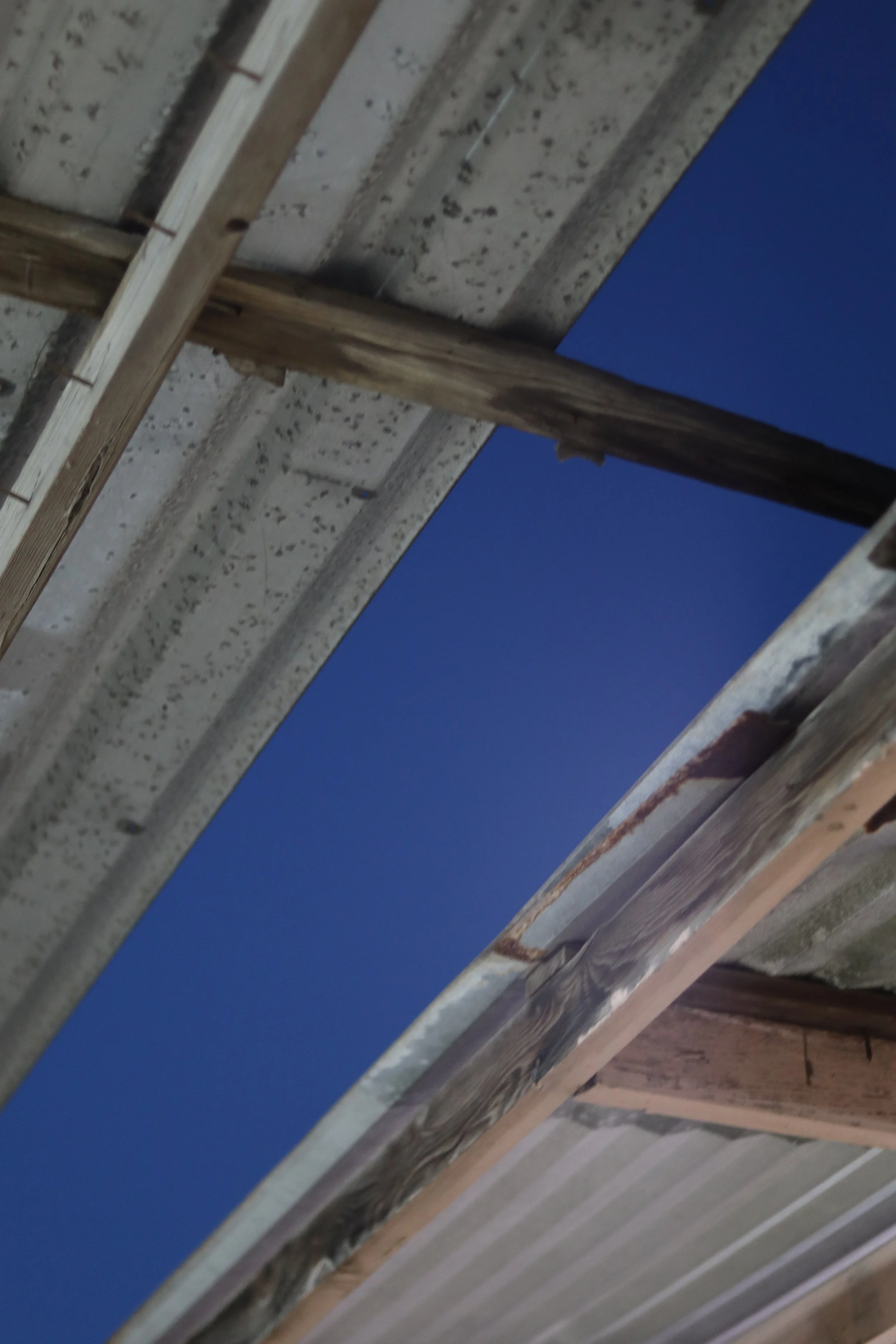The Baja California Issue
Turning Stones
Meandering down the alleys of Rosarito’s Mercado de Artesanías
Rosarito looks promising. After hours of fruitlessly circling Tijuana for parking, our car wasn't sure we would make it to the Rosarito Mercado de Artesanías. When we finally tumble out of the van, feeling the ground under my feet makes reality feel physical again.
The market is a hole in the wall, both literally and figuratively. The main street of downtown Rosarito, lined with music, alcohol, and bright lights, bustles with life — almost what I’d imagine Vegas to feel like. Slipping into a crevice between two street shops, we walk off the pavement into a dimly lit world cloistered under metal roofs, sequestered from the drunken gaze of the nightlife. A spender’s hidden paradise.
Except — is it really a secret?
Almost immediately, we are faced with the question of which way to go. The ends of the market stretch out of sight, and I can’t tell how this place is organized — assuming that it’s organized at all. I make a spin, uncertain. I don’t want to miss anything. Which path to explore? I consider the options for a moment before shrugging, deciding to follow my feet as opposed to overthinking. Though the labyrinth is mostly devoid of any other shoppers or tourists, their presence still lingers.
“Can I interest you in my shop?”
“Come here, take a look!”
“If you see anything you like, just let me know.”
I am instantly taken aback by the sheer amount of English. One shopkeeper shuffles a stack of U.S. dollar bills while another shop boasts a sign that exclaims “CLEARANCE! SALE! Pandemic prices!”
I shift in discomfort. It feels apparent we’ve stumbled upon a tourist trap.
The dying daylight disappears, replaced by the meager amount of luminescence provided by each stall’s bulbs. Even during the day, the sun remains hidden — shoppers have no way of knowing how much time they’ve spent inside. The darkness is so stark that when I come to an intersection where the metal roofs don’t quite meet, with a sliver of blue sky coming into view, I feel the urge to take a picture. Moths to flames, we browse the various shops, stopping occasionally to observe the inhabitants of the market. Pigeons and children run amok while the proactive and very friendly shopkeepers shift on their feet, restless and a bit tired.
The air feels cool and damp on my skin as we meander through the stalls. I'm not quite sure what I'm looking for. What I find is the most random collection of world pop culture I could've ever dreamed up. A Laker’s apron hangs above our heads, wooden figures of Groot sit on the floor covered in plastic saran wrap. Stained glass decorations, Chinese calligraphy, a Marilyn Monroe poster. Bright colors meet the eye at every turn, and in some ways the haphazardness reminds me of my dorm, and the mess that is my desk. Every knickknack, bauble, trinket and curio anyone could ever want is just within arms reach. At one stall I point out a Naruto carved statue, and someone points out the juxtaposition of it in contrast to the Virgin Mary right behind it.
Wandering over to a jewelry shop, I take note of a cork board display of necklaces. They aren’t hard to make, and touching a wire-wrapped stone, I offhandedly ask the shopkeeper if it’s real obsidian. If he's surprised I recognize the stone, he doesn’t show it, instead taking off a necklace and explaining to me how it took just three minutes to make.
At this point we’ve reached the end of both his English and my Spanish capabilities, so thankfully, Montse enters to take over the conversation. We learn the shopkeeper’s name is Luis, and that he comes from a family of artisans who make their living working with stones. In addition to showing us an intricate floral designed necklace of wire-wrapping that took him a full day to make, he presents bigger pieces of naturally eroded rocks, a few in the shape of various desert flowers, another a stunningly elaborate heart. It's obvious that Luis knows what he’s talking about as he excitedly displays multiple pieces that he and his friends or family have worked on. It’s amazing to compare the raw material that he starts off with and the final products. A mere glimmer in an otherwise innocuous hunk of rock has so much more potential than one might imagine.
It comes to a point where it doesn’t quite seem like Luis cares whether or not we buy anything — he seems content enough to tell us about his work, his life, and his livelihood. I am struck by his willingness to share his story with a complete stranger, taking a moment to marvel at his openness.
When one thinks of traditional Mexican crafts, the array of products offered at Rosarito’s Mercado de Artesanías aren’t necessarily the first that come to mind. And yet, in the midst of this market, we still managed to meet Luis, an artisan in the truest sense of the word. How does one tell the mass produced and seemingly “inauthentic” from the original heart? How do you pick the Luises of the world out from the people who, as Montse puts it, are simply “profiting off stereotypes?”
These were the wrong questions. Cities like Tijuana and Rosarito in Baja haven’t lost their culture to tourism — after all, what even is a culture? A certain group of people’s religion, customs, language, art style, history? There are certainly aspects of culture that remain stagnant, but then again, people are dynamic. We travel, we move, we talk, we share, we live. Over time, we evolve. For Baja, tourism is just one of the major influences embedded in the economy and everyday lives of these local communities. In the same way that Mexican culture influences southern California, American culture influences Mexico. The border between Mexico and the United States is a place of barter and exchange, watercolor spilling over the edges and creating a Venn diagram of life and norms. It’s up to the traveler to grasp a place in hand and see it for what it is, not what you expected it to be.
Words: Audrey Sioeng
Photos: Christina Kan, Montserrat Urbina, William Fei
Design: Christina Kan






